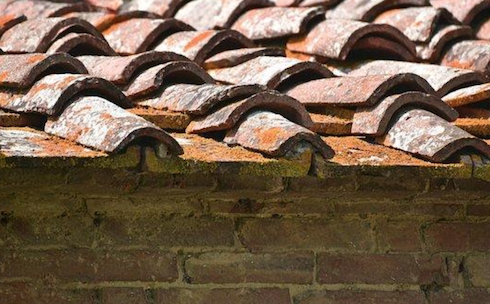
A leak in your roof can lead to thousands of dollars in damage if you don’t repair it, but one or two minor leaks may not mean that you need to replace the entire roof. In fact, if you act quickly, you can often get away with a minor repair bill, costing you hundreds of dollars instead of thousands. But other than the water coming into your home, how can you identify a roof leak before it severely damages your home.
Signs of a Leaky Roof
The most obvious sign that your roof has a leak is a drip coming down from the ceiling of the top floor of your home. If you have water pooling at the top of your ceiling, the chances are good that there is a lot more water in the attic. But if you have a slow leak, you might not have as obvious of a sign as water dropping onto your floor. One common sign of a roof leak is ceiling staining. If your ceiling looks dark or discolored, it may be that the ceiling material is wet. You can also look into your attic with a flashlight. Use a ladder and carefully go to the access point. Shine the light in all directions. If you see water or other signs of a leak, like darkened or swollen wooden beams, you may have a leak. Another sign of a roof leak is a damp or musty odor.
What You Should Do if You Have a Leaky Roof
According to the experts at http://www.roofingbyelite.com/, there are several steps you can take to mitigate the damage from a leaky roof. Above all, use caution whenever attempting a roof repair and have another person with you for safety. Here are some things you can do.
- Move furniture or anything else from below the leak.
- Put a bucket or pot below the leak to prevent water from damaging your floor.
- When it’s safe (no rain, lightning, etc.), go onto your roof with a tarp and place it over the area you believe is leaking. You can tack it to the tiles with a hammer or weigh it down with sandbags.
- If you have an electrical fan, you can ventilate your attic. Do not allow the fan or wires to be near the water.
- Call an experienced roofing company to survey the damage and provide you with a repair estimate.
Roof Repair vs. Replacement
Depending on the age and the condition of the roof, you may want to consider replacement instead of repair. This may be an expense you were not expecting to have, but there are some advantages to roof replacement over repair. For instance, a new roof will increase the value and marketability of your home. Some roofing materials can last thirty years or more, so you don’t have to worry about another replacement anytime soon.
Here are some factors to consider when deciding on repair vs. replacement:
- The age of the roof.
- How extensive the leaks are.
- The amount of damage you’ve sustained. (Most insurers require 25-50% of roofs to be damaged before they will replace them under their policies.)
- The material of your current roof.
- Whether the insurance company will cover it under a storm or other casualty.
FAQ About Roof Repair and Replacement
The following are frequently asked questions by homeowners who are considering replacing or repairing their roofs.
How long is a roof supposed to last?
The answer to this question depends largely on the material and the area of the country where your roof is located. For example, an asphalt shingle roof may last 15 to 20 years, where a clay-barrel tile, concrete, or metal roof may last for 40 years or more.
Can I fix a roof leak myself?
Making temporary repairs on your roof leak may save you some money and prevent damage, but for a lasting repair, you should consult a roofing expert in your area.
If you believe that your home has a roof leak, don’t wait to act on it. Just because the weather is cooperating today doesn’t mean that a damaging storm won’t come through before you make your repairs. Call a roofing company in your area before it’s too late.




 POSTED BY
POSTED BY 

